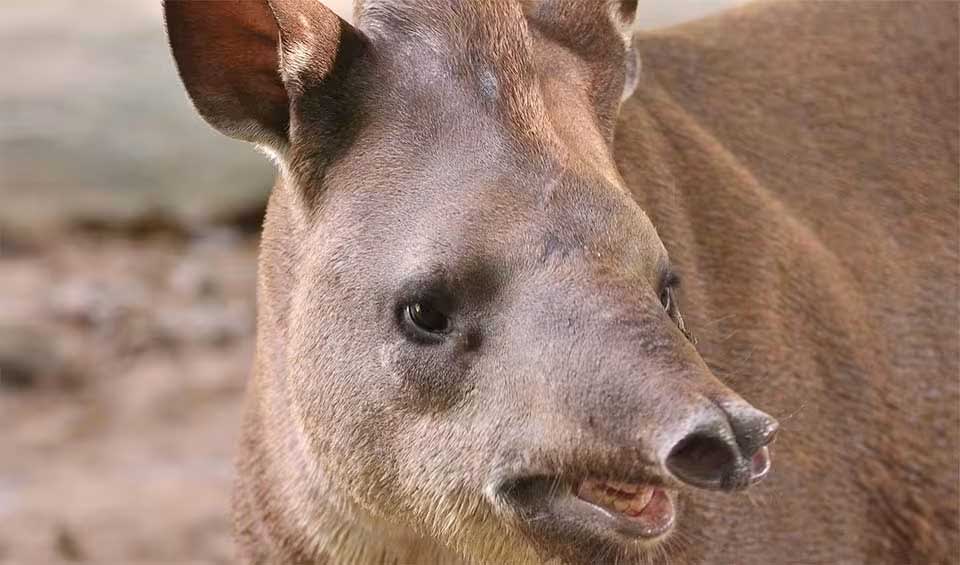Tapiridae – Tapirs
Some of the most primitive mammals on earth, are never far from water!
With just five extant species, tapirs are among the most ancient and evolutionary distinct herbivores inhabiting the tropical forests, grasslands, and mountainous regions of South and Central America, as well as Southeast Asia, where the Malayan tapir is found.
Tapirs are characterized by their robust bodies, short legs, and particularly their flexible, elongated snouts, which are an extension of the upper lip and nose. This prehensile nose is a versatile tool used for grabbing foliage and fruit to eat and serving as a snorkel during their frequent swims. Tapirs are indeed proficient swimmers, with water playing a crucial role in their behavior for cooling off, escaping predators, and sometimes even giving birth in water to ensure the safety of the newborns from terrestrial threats.
Despite their bulk, tapirs are surprisingly agile and can move quickly through their dense forest habitats. They often follow well-trodden paths that they create and that are also used by other animals. They are primarily nocturnal or crepuscular, spending the day hidden in thick vegetation to avoid the heat and emerging at night or during twilight to feed and move around.
Currently, tapirs face significant threats from human activities. Habitat destruction due to deforestation for agriculture, illegal logging, and road construction has led to the fragmentation of their living spaces, making it increasingly difficult for tapirs to find food and mates and roam freely. Poaching for meat and hide and competition from livestock further exacerbate their plight. Given their role as seed dispersers, contributing to the health and regeneration of forests, the decline in tapir populations can have cascading effects on their ecosystems. As “umbrella species,” conserving tapirs and their habitats can also protect many other species that share their environment.
Genera in this family
Found only in Central and South America, members in this genus are highly threatened due to hunting, poaching, and habitat loss
The largest tapir species in the world and the only one found in Asia
The Baird’s tapir is the largest land mammal native to Central and South America




